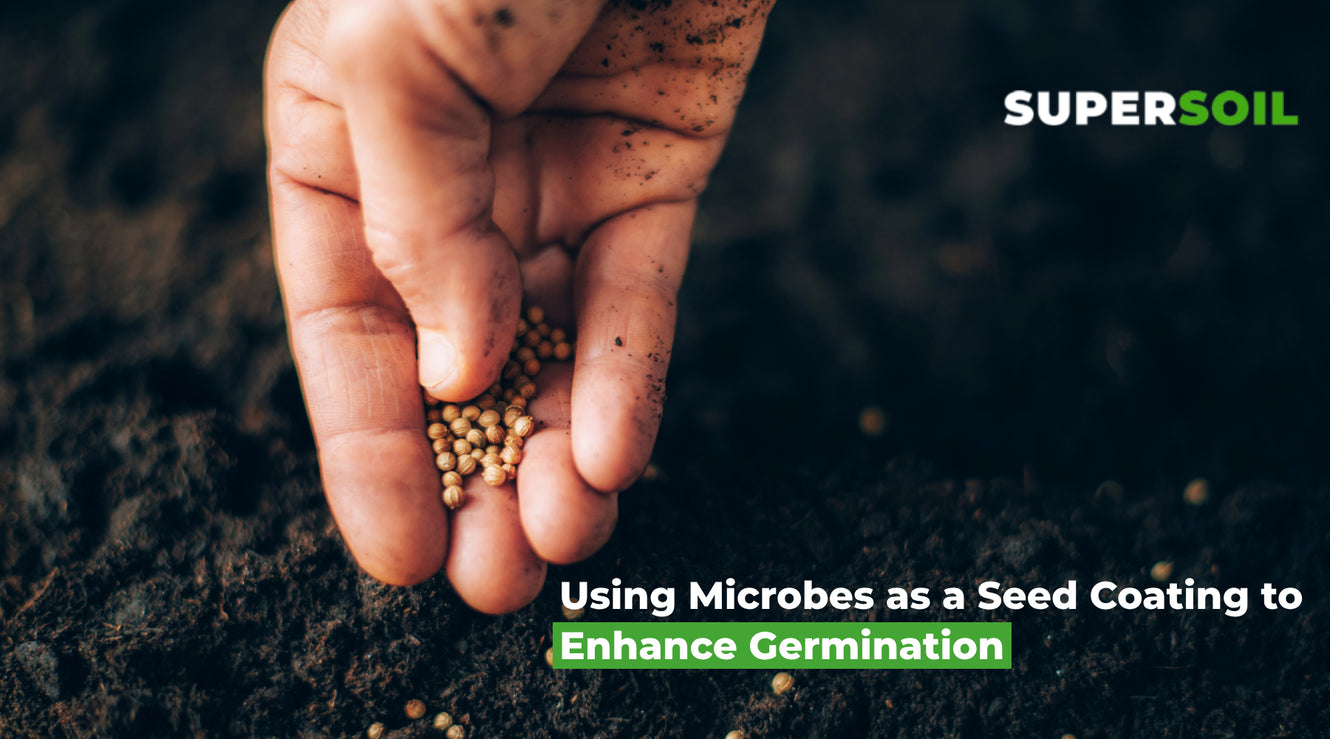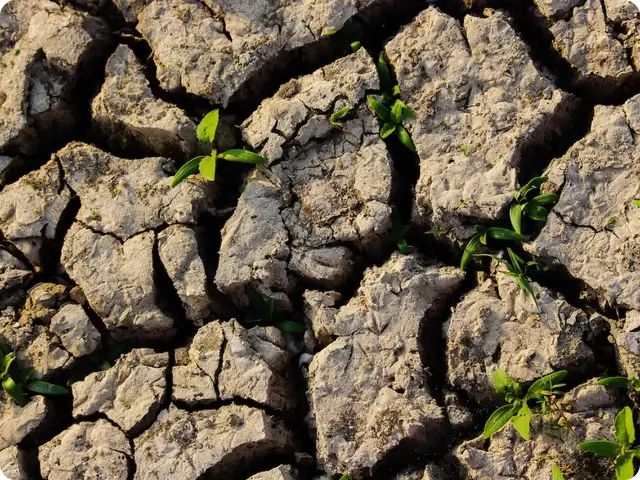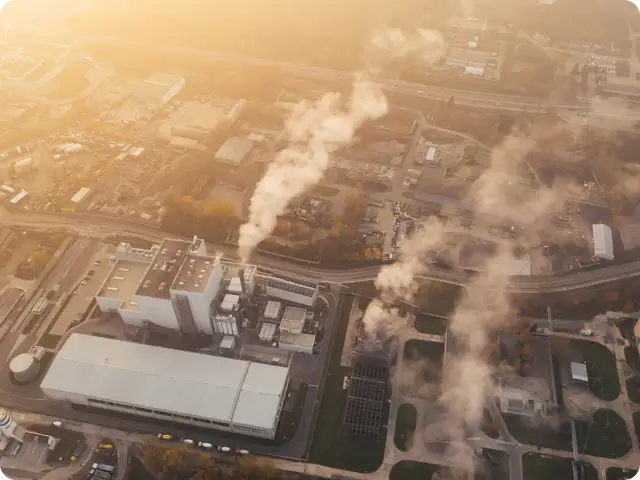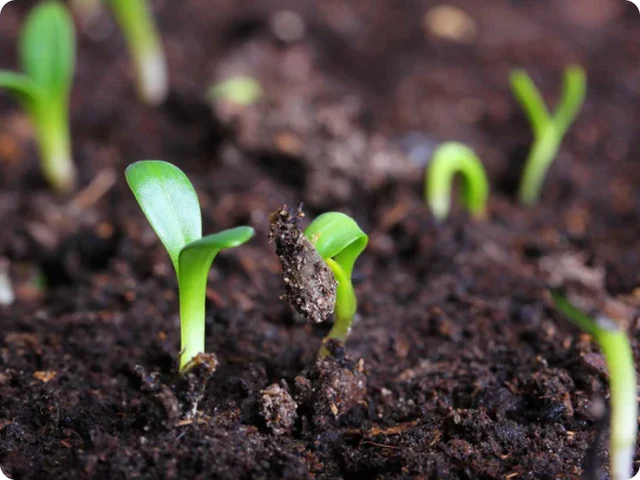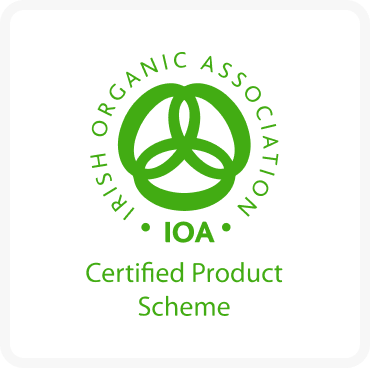Flowers and fruit are only the beginning.
In the seed lies the life and the future.
- Marion Zimmer Bradley
Seeds are the life and future of humanity. Without seeds, we would be unable to grow the food we need for our growing population and fuel all the amazing advances we continue to make. Therefore, ensuring high-quality seeds that germinate fast and efficiently is critical to that future.
In this article, we will cover some background information on seeds' unique biology to explain how the presence of microbes on the seed surface can significantly enhance their germination.
A Basic Introduction to the Biology of Seed Germination
The Evolution of Seeds
What is a seed, and where do they come from? When we talk about seeds, we are usually talking about the angiosperms, a Greek root word meaning “covered seed,” which refers to our vast variety of flowering plants that evolved about 125 million years ago. Before that, there were the gymnosperms or “naked seeds,” and before that, there were more primitive spore-bearing plants like mosses and ferns.
Covered seeds are a unique evolutionary advantage that allowed angiosperms to dominate our planet in a short period of time. They form inside flowers during a process known as embryogenesis, the development of a plant embryo, which contains all the genetic information it needs to grow into a mature plant and a store of nutrients to help it start its journey.
Embryogenesis
Embryogenesis begins in the flower when the ovary receives pollen from the anthers to fertilize the ovules contained within. Double fertilization is a process unique to angiosperms, where two sperm cells fertilize a single ovule. The first fertilization event produces a plant embryo containing all the necessary information to grow into a fully developed plant. The other fertilization results in an endosperm, rich in carbohydrates, proteins, and lipids, to nourish the growing embryo later on. Seed maturation occurs next, where the embryo becomes protected by the testa, a hard outer coating also unique to angiosperms that encases the endosperm and embryo. This is then followed by dormancy and, later, germination.
Seeds and Microbes Evolved Together
When the angiosperms evolved, the diversity of plants on Earth dramatically increased. Seeds give plants the ability to survive harsh conditions, providing them with the protection they need to survive desiccation. They also enable their dispersal to other areas and provide nourishment through endosperm to help them start their life journey. Microbes were present at every step of this amazing evolution, helping the angiosperms derive nutrients through the solubilization of minerals like phosphorus or through fixing nitrogen from the atmosphere. They also help protect against pests and disease and allow the plants to survive environmental stresses.
Therefore, it makes sense that seeds and microbes are intertwined in a complex, mutually beneficial relationship that we eggheads call a symbiosis. This can be seen in the fact that seeds contain diverse microbial communities within their tissues (seed endophytes) and on their surfaces (the seed epiphytes). Those within, the endophytes, come from the parent plant via sexual reproduction - the microbes contained in the ovules and pollen. Some of those on the outside also come from the parent plants, but most come from the environment.
The diversity of the seed microbiome varies greatly between plant species, from just a few to thousands of different microbes. The microbiome variations are consistent with species variations; the more distantly related they are, the more different their microbe composition is. Interestingly, domestication has decreased wheat's seed microbiome, while in other cereals and rice, their domesticated seeds have a higher microbial diversity. This also shows a close but very complex relationship between plants and microbes.
So, how do you have a mutually beneficial relationship? Each symbiont needs to derive a benefit from the relationship, but they also need to be able to exchange those benefits and communicate in some way. Plants and microbes cannot talk to each other, or can they?
The Role of Phytohormones
Plants and their hormones, called phytohormones, are far more sophisticated than we might first assume. Phytohormones are biochemicals plants produce to regulate growth, development, reproduction, immunity, lifespan, and death. They also regulate gene expression and physiological processes shaped by environmental cues such as light and abiotic stresses like heat, cold, water stress, and others, helping them survive harsh conditions. This is not unlike the biochemicals in the human body that regulate those same processes in human biology; interestingly, many phytohormones have a biological effect on the human body, and some can even be used to treat human diseases and cancer.
However, phytohormones are also how plants communicate with each other, with microbes, insects, animals, and all the other organisms on Earth by releasing phytohormones that are detectable by the organisms around them. For example, when plants detect a pathogen via pattern recognition receptors on the surface of their cells, phytohormone-regulated immunity is triggered to defend against that pathogen. Plants can emit phytohormones that will attract the enemies of their enemies—the predators that feed on the herbivores feeding on them.
Often, the phytohormones signal that the plant is unhealthy, which invites pests and pathogens to attack. This natural evolutionary process removes the unhealthy plant from the population, which protects the others of its species around it. This is not much different from the lion attacking the sickly or lame buffalo, signaling their weakness and vulnerability to attack. The plant’s phytohormones also signal the other plants around them that they are under attack, and those plants respond by building their own defense mechanisms.
So, instead of language, sounds, or movements, plants communicate using phytohormones and other volatile biochemical compounds.
Phytohormones in Seed Dormancy and Germination
Given their complexity and involvement in many processes, it is unsurprising that phytohormones also play key roles in seed dormancy and germination. Among those of particular importance are the auxins, indole-3-acetic acid (IAA), abscisic acid (ABA), ethylene, brassinosteroids, cytokinin, and gibberellins (GA).
For example, ABA is important in seed dormancy and germination in a delicate and highly complex balance with other phytohormones like GA, brassinosteroids, ethylene, and cytokinin, which can signal or inhibit germination, depending on the proportions of each present. In the right complex balance, those phytohormones combined with imbibition (the absorption of water by seeds at species-specific temperatures) initiate germination.
Auxins, especially IAA, are involved in almost every step of plant growth and development, including either inhibiting or promoting germination, dependent on the ABA present in a delicate balance of ABA-auxin-mediated seed dormancy.
For this reason, treating seeds with phytohormones is sometimes used to enhance germination. But as you have just learned, phytohormones are highly complex, relying on inhibition-stimulation cycles that depend on delicate balances of each phytohormone that are typically very species-specific. Furthermore, using phytohormones, particularly GA, to induce germination can often trigger undesired, unusual, and highly unpredictable growth patterns. This is because it is still far too complex to understand, even for just a single species, let alone all of Earth's 300,000 or so angiosperm species.
IAA Phytohormones and Plant-Microbe Interactions
Plants and soil microbes have co-evolved over millions of years, so it makes sense that they would significantly impact each other, but how they interact might be surprising.
For example, the common phytohormone IAA is also a signaling molecule in microbes that can affect some of their gene expression. Not only can it affect microbes, but they can also produce it themselves. For instance, Rhizobia bacteria associated with root nodules in legumes produce IAA, which in turn stimulates the plant to form root nodules that provide a home for them. The bacteria then fix inert atmospheric nitrogen and supply it to the plant in a bioavailable form. In exchange, the plant supplies root exudates full of carbon sugars that the microbes use for energy in a beautiful, mutually beneficial relationship. In fact, over 80% of the microbes found in the rhizosphere (the soil zone containing plant roots), not just those associated with root nodules, can synthesize the plant phytohormone IAA.
Therefore, IAA is an important reciprocal signaling molecule in microbe-plant interactions. We also know it plays an important role in seed dormancy and germination. So, it is safe to say that since they produce IAA, microbes must also play a significant role in seed dormancy and germination.
Microbes Enhance Seed Germination
Countless studies have shown strong correlations between the richness of microbes in the rhizosphere and seed germination, typically increasing rates by 35-97%.
So, how do microbes enhance germination? As you might now expect, it is through a complex series of phytochemical, biochemical, and other symbiotic processes. During imbibition, when the seeds swell in response to water, they release copious chemical exudates made of plant sugars and amino acids into the soil around them, which comes from stores in their endosperm. Those exudates are akin to a probe, sending it out into the environment to detect the presence of microbes. It is also a critical food source for microbes that use the sugars in them to fuel their own growth. Therefore, the presence of seed exudates promotes microbial growth.
In turn, those beneficial microbes present in the exudates then release phytohormones and other biochemicals that signal plant growth, while other beneficial microbes there promote the degeneration of the protective coating on the seed. For instance, studies in Cryptocarya densiflora, which has a very hard seed coat, have shown that neither water immersion nor chemical treatment enhanced germination; the only thing that did was the presence of microbes. Once the plant embryo receives those microbial signals via the exudate, and the microbes help degenerate the seed coating, the embryo germinates into a young plant.
However, if the plant receives no chemical communication from the microbes, it may keep releasing exudates without the reciprocal stimulation of germination and degradation of the protective coating to facilitate it. In this case, the seeds just waste valuable energy by releasing exudates without receiving signals from microbes to stimulate them, resulting in poor germination rates and times and subsequent reduced seedling vigor in those that do germinate.
Since plants and beneficial microbes evolved in symbiosis to create better germination, enhancing that symbiosis is what’s most important. When the plant embryo detects a healthy microbe population present, it can use the rest of its energy to promote germination and growth of the radicle and primary leaves rather than wasting energy to promote more microbial growth. Instead, both occur simultaneously.
Using Microbes as a Seed Coating to Enhance Germination
Early studies into seeds and microbes focused on pathogenic fungi. Unfortunately, this focus created a distorted view of microbes and seeds, leading people to believe that seeds free of microbes were of better quality when the opposite is actually true. This led to the widespread use of physical and chemical treatments to remove microbes from seeds. Unfortunately, while these treatments destroyed the pathogenic fungi, they also destroyed the beneficial microbes.
Many studies have shown that seeds with low bacterial abundance and diversity contain the highest abundance of potential pathogens. This is analogous to mother’s milk. We now know that a mother’s milk provides a beneficial microbiome for newborns that enhances their immunity and growth compared to children who do not receive that early inoculation, making them more susceptible to pathogens and allergens. Plants are no different. Without that early inoculation, they are more vulnerable to pathogens and dependent on synthetic fertilizers and pesticides to compensate for the loss of their early microbiome. Plant phytohormones and microbes already protected seeds from pathogenic fungi, so sterilizing the seeds was not only damaging the future plant’s immune system but also completely unnecessary. Now that we understand so much more about healthy plant-microbe interactions, we know that more microbes, not less, are the key to successful seed germination and growth.
One simple way for commercial seed producers to enhance the germination rates of their seeds is to apply the microbes to the surface of the seeds as a coating. This will also establish an early microbial relationship with the developing plants, resulting in a biostimulant effect that enhances plant growth, increases nutrient uptake, and improves resilience to abiotic and biotic stresses, thus enhancing both seed germination and seedling vigor.
You can apply Supersoil with its trillions of microbes directly to the seed as a coating to enhance that mutually beneficial relationship early on. Doing this produces two substantial benefits: less microbial inoculum needed per plant since it is already at the seed-soil interface, and most importantly, the immediate contact between microbes and roots at the time of germination and early development.
Economics of Seed Treatments
Improving seed quality is a major objective of the agricultural industry, with the global seed market estimated at $92.32 billion USD by 2025. Pre-inoculating seeds with beneficial microbes to enhance germination and seedling vigor is a great way to give commercial seed producers a strong advantage in this competitive market.
Many companies are turning to seed treatments to enhance seed quality. According to market research, the biological treatment of seeds is expected to reach $1.7 billion USD by 2025, and microbe treatment, classified as biostimulants, will reach $338 million USD by 2025. Given the enormous success rates seen so far in this still-new field of agricultural sciences, that number will likely rise dramatically in future years.
Seed Priming Vs. Seed Coatings
To clarify, seed priming differs from seed coating, even though sometimes they are used interchangeably. Seed priming is a process performed by growers rather than seed producers and includes techniques like hydration, acid scarification (to simulate the passage through an animal’s digestive tract), scarification (the scratching or physical damaging of the seed coat to enable germination), and cold stratification (chilling the seeds to simulate winter conditions), which all enhance germination. However, what works well for one seed can either not work or even harm another. This is why microbial seed coating treatments are preferable; in almost all cases, they increase germination. While rarely, it may have no effect on germination, a negative result with a reduction in germination is exceptionally rare and has not been seen in any commercial crops.
One seed priming technique that has proven particularly beneficial in most cases is hydration. Hydration is done by either immersing seeds in water or leaching them by washing the surface of the seeds with water to help remove some of their protective coating. Hydration techniques are helpful because they induce imbibition. This allows moisture to enter the seed, bringing more direct embryo-microbe interactions. Therefore, hydration is even more successful when the seed already contains sufficient microbes on its surface. This could be especially helpful for those dealing with the propagation of rare and endangered plant species to enhance their survival rates.
Microbes Enhance Seedling Vigor
The seed exudate-beneficial microbe interaction does not end at germination. Microbes enhance seedling vigor by stimulating germination because the emerging seedling can use its nutrient stores to feed itself rather than using them up trying to build a microbiome. When seedlings emerge fast and vigorously, they are better equipped to take in water and nutrients, compete with weeds better, and are generally more tolerant of any adverse environmental conditions. The result is plants that grow faster and healthier and produce much higher yields.
Then, as the roots emerge and grow, they continue releasing exudates to feed their microbial symbionts. The exudates even change, attracting different microbes that help provide immunity from pathogens, supply nitrogen, or solubilize inorganic phosphorus and potassium in the soils, making them available to the plants in a beautiful biological trade economy that benefits both.
So, in addition to promoting germination, microbes also help protect and feed the young seedlings and the mature plant later on.
Microbes Promote Better Growth And Yields in Mature Plants
How Applying Microbes to Seeds Increases Biomass
Even just applying microbes to the seeds alone, through faster germination rates that produce more vigorous seedlings and inoculate the soil around them, significantly increases biomass in the mature plants. Studies in controlled environments with multiple plant species have shown that applying microbes to seeds resulted in an increase of biomass in the radicle (the primary root that emerges from the seed) by 36%, increased mature plant root lengths by 16-135%, increased adventitious roots by 61%, increased shoot lengths by 12-169%, increased leaf area by 20-86%, and increased dry weight biomass by 10 - 276%.
Growers Can Also Use Microbes For Germination
If you are a grower rather than a seed producer and you have untreated seeds, you can always add microbes as a seed coating before planting them in the fields. For smaller-scale growers using hydration techniques, you can add the microbes to a water immersion or leaching apparatus; just be sure to aerate your water with an air stone to encourage aerobic (with oxygen) microbial growth. Either way, you still get the microbes in direct contact with the seed prior to planting them.
Using Microbes For Additional Benefits
Whether your seeds come pre-coated with microbes or not, adding microbes to your soil or other growing medium is still important to promote ongoing plant growth, improve yields, reduce reliance on chemical fertilizers and pesticides, and achieve other agroecological advantages.
Using microbes in the soil will also dramatically improve your soil. It enhances your soil biome, regenerates degraded soil, reverses soil erosion, reverses soil salinization, and increases soil organic carbon, which helps combat climate change. We delve into these topics much more deeply in other articles in this series.
Final Thoughts
While the science of plant germination and plant-microbe interactions is very complex, the solution to enhanced germination is very simple. The more beneficial microbes on the seed surface result in improved germination, enhanced growth, and, often, dramatically improved yields. It really is that simple. Just add Supersoil to your seeds and watch the success grow!
References
Abdelfattah, Ahmed; Tack, Ayco J M; Lobato, Carolina; Wassermann, Birgit; Berg, Gabriele. (2023). From seed to seed: the role of microbial inheritance in the assembly of the plant microbiome. Trends in Microbiology, ISSN: 0966-842X, Vol: 31, Issue: 4, Page: 346-355. https://www.cell.com/trends/microbiology/fulltext/S0966-842X(22)00292-X#secst0010
Ali, F., Qanmber, G., Li, F., & Wang, Z. (2022). Updated role of ABA in seed maturation, dormancy, and germination. Journal of Advanced Research, 35, 199-214. https://doi.org/10.1016/j.jare.2021.03.011
Barrera, D., Luera, J., Lavallee, K., & Soti, P. (2021). Influence of microbial priming and seeding depth on germination and growth of native wildflowers. Ecological Processes, 10(1), 1-8. https://doi.org/10.1186/s13717-021-00287-4
Cardarelli, M., Woo, S. L., Rouphael, Y., & Colla, G. (2022). Seed Treatments with Microorganisms Can Have a Biostimulant Effect by Influencing Germination and Seedling Growth of Crops. Plants, 11(3). https://doi.org/10.3390/plants11030259
Eldridge, D. J., Travers, S. K., Val, J., Ding, J., Wang, T., Singh, B. K., & Delgado-Baquerizo, M. (2021). Experimental evidence of strong relationships between soil microbial communities and plant germination. Journal of Ecology, 109(6), 2488-2498. https://doi.org/10.1111/1365-2745.13660
Erb, M., Meldau, S., & Howe, G. A. (2012). Role of phytohormones in insect-specific plant reactions. Trends in Plant Science, 17(5), 250. https://doi.org/10.1016/j.tplants.2012.01.003
Erb, M., Foresti, N., & Turlings, T. C. (2010). A tritrophic signal that attracts parasitoids to host-damaged plants withstands disruption by non-host herbivores. BMC Plant Biology, 10, 247. https://doi.org/10.1186/1471-2229-10-247
Evans, A. S., Mitchell, R. J., & Cabin, R. J. (1996). Morphological Side Effects of Using Gibberellic Acid to Induce Germination: Consequences for the Study of Seed Dormancy. American Journal of Botany, 83(5), 543–549. https://doi.org/10.2307/2445911
Fiodor, A., Ajijah, N., Dziewit, L., & Pranaw, K. (2023). Biopriming of seed with plant growth-promoting bacteria for improved germination and seedling growth. Frontiers in Microbiology, 14. https://doi.org/10.3389/fmicb.2023.1142966
Gasperini, D., & Howe, G. A. (2024). Phytohormones in a universe of regulatory metabolites: Lessons from jasmonate. Plant Physiology, 195(1), 135-154. https://doi.org/10.1093/plphys/kiae045
Ge, M., & Wei, X. (2024). Spermosphere bacterial community at different germination stages of Ormosia henryi and its relationship with seed germination. Scientia Horticulturae, 324, 112608. https://doi.org/10.1016/j.scienta.2023.112608
Hubert, B., Marchi, M., Ly Vu, J. et al. A method to determine antifungal activity in seed exudates by nephelometry. Plant Methods 20, 16 (2024). https://doi.org/10.1186/s13007-024-01144-z
Hussain Shah , Kim Sun Ho , Bahk Sunghwa , Ali Akhtar , Nguyen Xuan Canh , Yun Dae-Jin , Chung Woo Sik. The Auxin Signaling Repressor IAA8 Promotes Seed Germination Through Down-Regulation of ABI3 Transcription in Arabidopsis. Frontiers in Plant Science: 11. 2020. https://www.frontiersin.org/journals/plant-science/articles/10.3389/fpls.2020.00111
Kazan, K., & Lyons, R. (2014). Intervention of Phytohormone Pathways by Pathogen Effectors. The Plant Cell, 26(6), 2285-2309. https://doi.org/10.1105/tpc.114.125419
Khianngam, S., Meetum, P., Chiangmai, P. N., & Tanasupawat, S. (2023). Identification and Optimisation of Indole-3-Acetic Acid Production of Endophytic Bacteria and Their Effects on Plant Growth. Tropical Life Sciences Research, 34(1), 219-239. https://doi.org/10.21315/tlsr2023.34.1.12
Mukherjee, A., Gaurav, A. K., Singh, S., Yadav, S., Bhowmick, S., Abeysinghe, S., & Verma, J. P. (2022). The bioactive potential of phytohormones: A review. Biotechnology Reports, 35. https://doi.org/10.1016/j.btre.2022.e00748
Pozo, M. J., López-Ráez, J. A., Azcón-Aguilar, C., & García-Garrido, J. M. (2015). Phytohormones as integrators of environmental signals in the regulation of mycorrhizal symbioses. New Phytologist, 205(4), 1431-1436. https://doi.org/10.1111/nph.13252
Rhaman, M. S., Imran, S., Rauf, F., Khatun, M., Baskin, C. C., Murata, Y., & Hasanuzzaman, M. (2021). Seed Priming with Phytohormones: An Effective Approach for the Mitigation of Abiotic Stress. Plants, 10(1). https://doi.org/10.3390/plants10010037
Rochefort, A., Simonin, M., Marais, C., Guillerm-Erckelboudt, Y., Barret, M., & Sarniguet, A. (2021). Transmission of Seed and Soil Microbiota to Seedling. MSystems, 6(3). https://doi.org/10.1128/mSystems.00446-21
Rybakova, D., Mancinelli, R., Wikström, M. et al. The structure of the Brassica napus seed microbiome is cultivar-dependent and affects the interactions of symbionts and pathogens. Microbiome 5, 104 (2017). https://doi.org/10.1186/s40168-017-0310-6
Spaepen, S., & Vanderleyden, J. (2011). Auxin and Plant-Microbe Interactions. Cold Spring Harbor Perspectives in Biology, 3(4). https://doi.org/10.1101/cshperspect.a001438
Sugiharto, A et al 2022. Study of the effect of microbial addition in seed germination and seedling growth of Cryptocarya densiflora L. IOP Conf. Ser.: Earth Environ. Sci. 976 012055 https://iopscience.iop.org/article/10.1088/1755-1315/976/1/012055/pdf
Ueda, H., Kikuta, Y., & Matsuda, K. (2012). Plant communication: Mediated by individual or blended VOCs? Plant Signaling & Behavior, 7(2), 222-226. https://doi.org/10.4161/psb.18765

